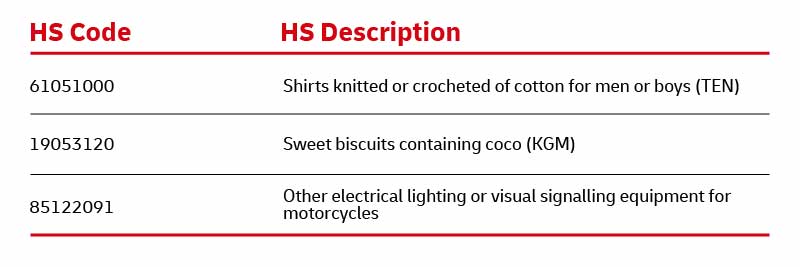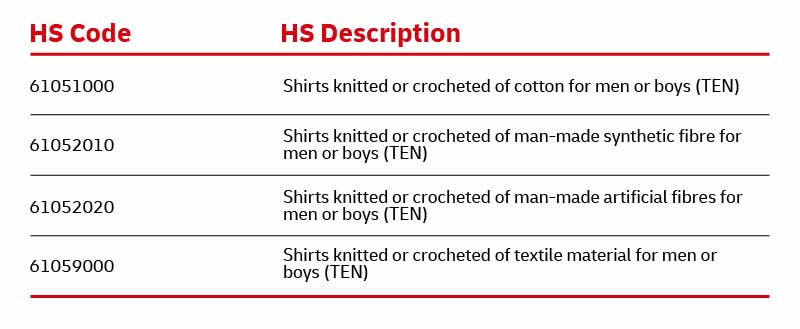Grow your business with the Discover newsletter
Logistics advice & insights straight to your inbox
Subscribe now
The Harmonized System code was designed to label all existing goods in elaborate detail so it would be easier to identify products internationally.
Harmonized System (HS) codes are a unique identifier to classify the exact type of goods you’re shipping.
HS codes were created by the World Customs Organization, and are internationally recognized in almost every country. As customs and government bodies now have a common point of reference to instill regulations based on HS classes, they are able to create a standard to approach each HS category the same way. This in turn creates a more organized importing/exporting structure and a good guideline for countries wanting to implement new regulations.


The responsibility of providing the HS code is always that of the shipper. You can find the HS code for your product via your country’s government website, or by using DHL Express’ dedicated MyGTS (Global Trade Services) tool.
The structure of each Harmonized System comprises of six digits. The first two digits identify the chapter of which the HS code falls under. There are a total of 21 chapters; each chapter provides a description to generalize the category. The next four digits comprise of the heading and sub-heading within the chapter.
ASEAN countries follow the ASEAN Harmonized Tariff Nomenclature (AHTN) – where the first six digits still take reference from the international HS codes – but there are an additional two digits at the end that further break down the sub-headings. Commodities shipped within ASEAN normally use the eight digit AHTN classification, but the six digit HS codes are also considered valid.

Businesses are encouraged to indicate the HS code in their shipping documents to ensure a uniform mode of clearance every time. There are thousands of different HS codes, but each commodity is further dissected into very specific descriptions.
In the example shown below, there are categories for men’s shirts made out of cotton, men’s shirts made of synthetic fibers, and men’s shirts made out of other textiles – the list goes on, totalling to about 10 different codes for the item ‘shirt’.

In some instances, certain commodities may contain overlapping codes, where two or more codes apply. In such cases, the shipper only needs to select one – usually the closest possible match to the actual item.
The customs department of almost every country would have already defined different regulations based on different classifications. When you include the incorrect code, there might be a risk of unintended duties and taxes, higher restrictions on importing, or in the worst-case scenario, rejection of entry into the destination country.
While it is not necessary to indicate your product’s HS code in any of the documents, it is always recommended to indicate it on your invoice to give a clear and accurate representation of the contents of your shipment, especially if the item you are shipping is very technical. Let’s use the example of “Television Parts” as a description on your invoice. Although the term to explain the product is straightforward, Television Parts can be further broken down into many different categories depending on the technicalities of the component. To truly define exactly which part you are shipping would require a HS code to clearly label the item.

HS code stands for Harmonized System code.
An HS code is a globally recognized classification of a traded product, via a system of names and numbers.
The best route is to search on your country’s government website.
DHL Express handles thousands of documents, parcels, and cargoes every single day. Its global network of international specialists are well-versed in customs regulations and HS code variations so that every shipment moves on to its destination without delay. Whether you're importing or exporting, opening a DHL Business Express Account means all the hassle of customs will be taken care of for you, so that you can focus on the business of selling!